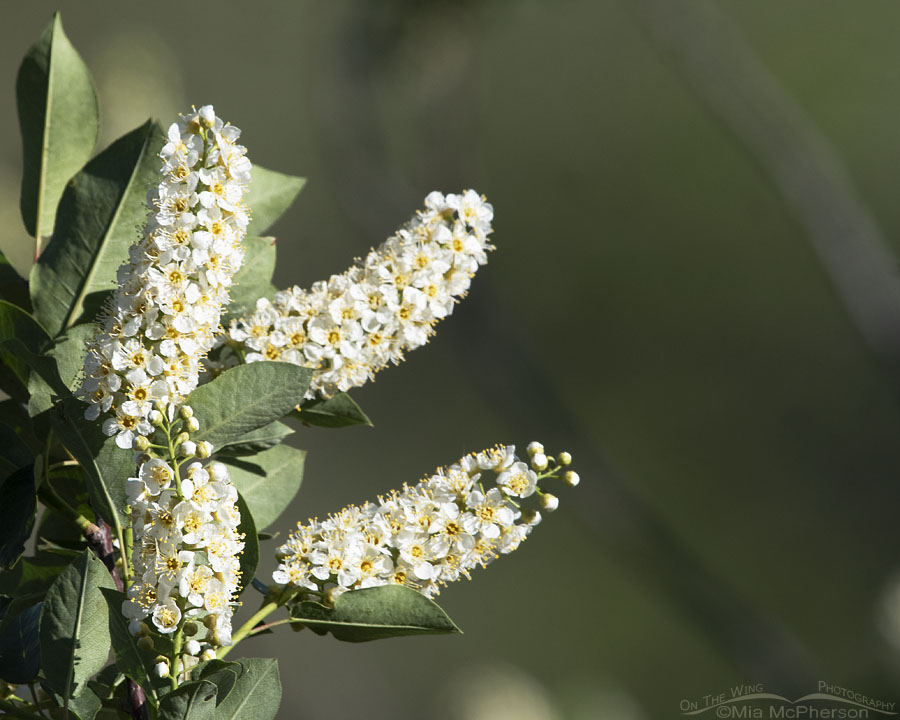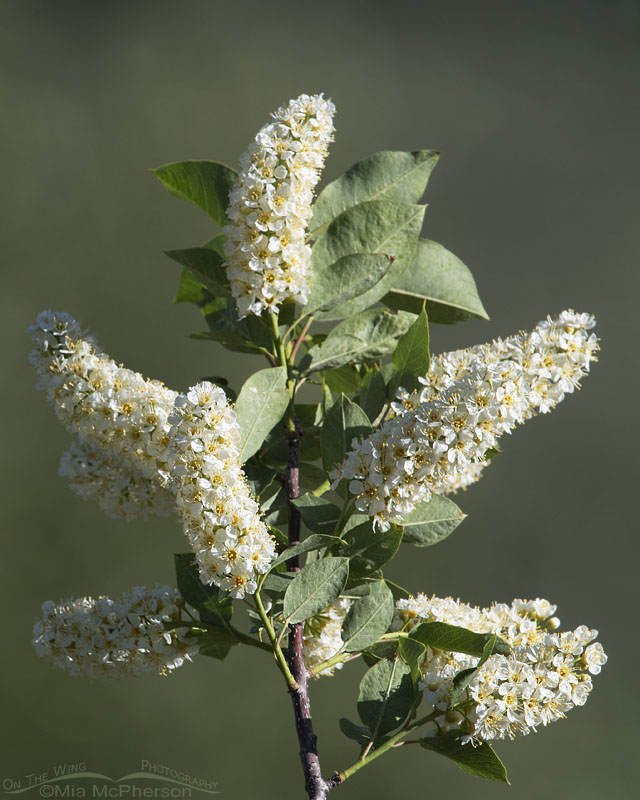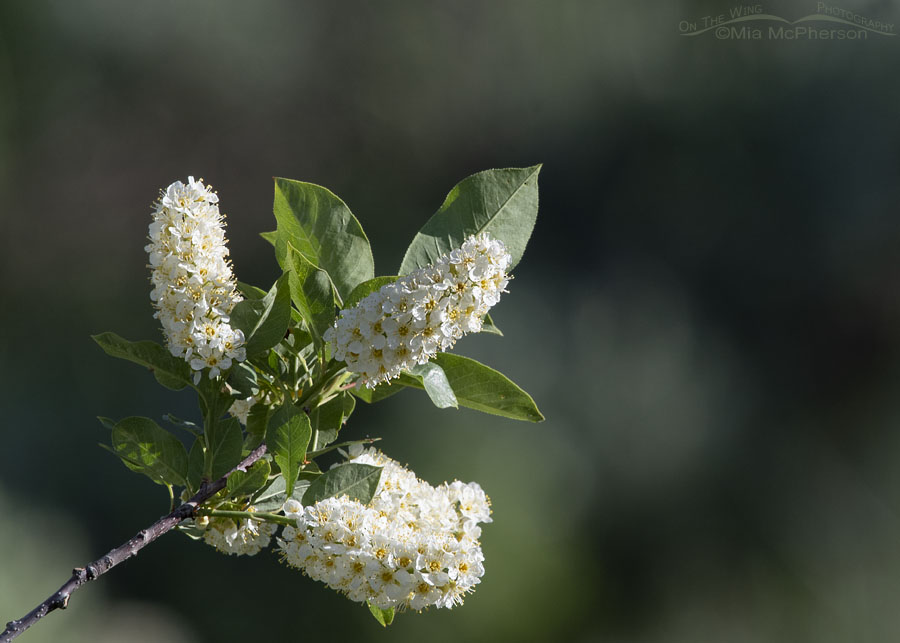 Wasatch Mountain Range Chokecherry in bloom – Nikon D500, f10, 1/1000, ISO 500, Nikkor 500mm VR with 1.4x TC, natural light
Wasatch Mountain Range Chokecherry in bloom – Nikon D500, f10, 1/1000, ISO 500, Nikkor 500mm VR with 1.4x TC, natural light
Last week while up in the Wasatch Mountains I savored the delicious perfume of blooming Chokecherry trees. The heady scent of their creamy white blossoms delights me each and every year.
When I am out in the field I pay attention to everything around me and when I don’t have birds in my viewfinder I often find other things to photograph because I know that everything in nature is connected.
When the chokecherries, serviceberries, currants, hawthorns, elderberries and other fruiting trees and shrubs are blooming I pay attention to them because I know if they set fruit and do well during the summer I will have opportunities to photograph birds feasting on their fruits and berries later in the year.
 Sun-kissed Chokecherry Blossoms – Nikon D500, f10, 1/640, ISO 500, Nikkor 500mm VR with 1.4x TC, natural light
Sun-kissed Chokecherry Blossoms – Nikon D500, f10, 1/640, ISO 500, Nikkor 500mm VR with 1.4x TC, natural light
But it isn’t just knowing about the fruits that the birds might feast on later in the year that draws me and my camera lens to photograph other things in nature.
It is also because I have a deep, life-long desire to know more or as much as I can about the natural world I see, feel, hear, smell and experience on my journeys. I am not just a bird photographer. I am also a student of nature each and every time I venture into the field because being out there teaches me something new on practically every journey.
Me? I just have to pay attention and be open to the free lessons that nature generously provides.
 Blooming Chokecherry in Utah – Nikon D500, f10, 1/500, ISO 500, Nikkor 500mm VR with 1.4x TC, natural light
Blooming Chokecherry in Utah – Nikon D500, f10, 1/500, ISO 500, Nikkor 500mm VR with 1.4x TC, natural light
I’m really very glad I took these blooming Chokecherry photos last week when it was warm and sunny. Over the weekend we’ve had much colder weather in northern Utah and up in the Wasatch Mountains. It has been so cold that freeze warnings were issued at higher elevations and snow fell in the high country.
The pristine blossoms I photographed last week have probably had some frost damage that might inhibit fruit production. Will fruit set on on the chokecherries that I photographed? I won’t know for a while.
Life is good. Stay safe.
Mia
Chokecherries (Prunus virginiana) are native to much of North America.
Click here to view more of my flowers, shrubs, trees, seeds, and leaves photos.


One of my favorite trees. My parents had a couple in their yard as I was growing up, I loved the smell. I don’t think the trees are still alive they were planted over 100 years ago by the original owner who landscaped with native plants he collected from the canyons.
Beautiful photo of the blossoms, I can almost smell them!
And what amazing lessons Nature provides. Frequently very, very beautiful lessons.
I love your comment about being a student of nature. 🙂
I took a good look at the blossoms of the chokecherries and the service berries, which we call Saskatoons here, and in the field book they are called Saskatoon Service Berries. That is when I put two and two together and realized the Service berries you talk about are our Saskatoons. I saw the blooms here in your photo and seen them here in the river valley recently but I wasn’t sure what they were. Now I know which berries come from which blossoms. I will have to do that with the Carriganas, High bush cranberries, etc.Unfortunately the field guides show one photo and that is of the shrubs with the berries. Ah hah! that is a project I can do during these lock-down times, take photos of these shrubs through the bud, blossom and fruit stage and keep them in a series so I may identify them more readily. Thanks for getting me started.
Wow, your Chokecherry trees are way ahead of ours in the Niagara area. Beautiful.